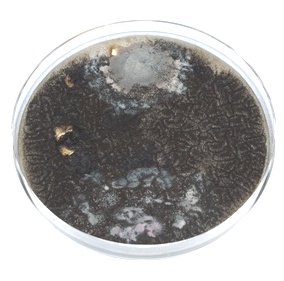Find a Mold Specialist Now
Click or Call, Toll-Free 24/7
Phoma in the Home
Phoma is a fast-growing mold that spreads easily from one area to another. It may be powdery or velvety in texture and may be many different colors, including white, pink, olive, brown or gray. It can vary a lot in color and appearance.
You can’t tell what kind of mold is growing in your home by looking at it. While you may be curious, you probably do not really need to know what type (or types, as there are often more than one kind of mold growing in a home at the same time) of mold is growing in your home. The U.S. Centers for Disease Control and Prevention says that all types of mold are potentially hazardous to your health and need to be removed from your home as soon as possible. The public health agency also points out that safe levels for various strains of mold have not been established, so information about how much mold is in your home may be of limited use.
If you want to know what kind of mold you’re dealing with, though, you can have your home tested to find out. There are other reasons some homeowners choose to have their homes tested for mold. For instance, you may need proof that there is mold in your home for your homeowner’s insurance company or you may want to make sure the mold was completely removed. Follow this link to learn more about mold testing.
This type of mold is less common than some other types of mold and not as much is known about it, but we’ll attempt to answer some basic questions for you.

Where Does Phoma Grow?
Like most types of mold, this one likes dark, damp places. You might find it under sinks with leaky pipes, behind leaky toilets, in showers, in attics with leaky roofs, in crawlspaces, or in any of the other likely places where mold may be found. Because it spreads easily, it may be in multiple areas of a home.
You should be aware that mold can grow in hard-to-see places, like inside walls, under carpet, under floorboards, and inside heating and air conditioning ducts. You can learn more about looking for hidden mold here.
Health Problems Caused by Phoma
Infection due to this type of mold is not often seen but it can occur. It usually develops after some sort of trauma, like an injury or surgery, which allows mold to enter the body. Skin infections and corneal infections are common. Less often, systemic infection occurs, when the infection spreads throughout the body and affects multiple organ systems. Such infections can be life-threatening.
Phoma-related infections are most likely to occur in immunocompromised people, or those whose immune systems aren’t functioning optimally. This is often due to illness but some medications, including corticosteroids (like prednisone), also lower immune functioning. Not only are immunocompromised people more susceptible to mold-related infections, but they will have more trouble recovering, too.
This strain of mold can also cause respiratory infections, like most other kinds of mold. The mold spores are very lightweight and easily inhaled, where they can irritate the respiratory tract and lungs. Coughing, sneezing, wheezing, shortness of breath, a runny nose, a sore throat, sinus infections, bronchitis and even pneumonia can result. Exposure to mold can also trigger asthma attacks and in some instances, may cause children to develop asthma.
Mold Removal
Any type of mold needs to be removed from your home as quickly as possible in order to minimize the risk to your health and the health of your family. If you’re experiencing mold-related health problems or if you are immunocompromised in some way, we recommend calling in a mold removal professional. The mold removal process stirs up mold spores and would further expose you to the potential health hazard. In addition, it will be especially important that the job is done right and a professional will have the knowledge and skill needed to accomplish that, as well as all the necessary equipment. The U.S. Environmental Protection Agency recommends talking to your doctor if you have questions about whether or not it is safe for you to clean up mold yourself.
You can schedule a free consultation with an experienced mold removal professional to discuss the work that needs to be done in your home. Even if you plan to do the work yourself, you can benefit from some free advice from an expert in the field. Just follow this link to find qualified mold removal professionals near you.
Return From Phoma To Our Main Mold Types Page
Privacy Policy Terms and Conditions Accessibility Do Not Sell My Information Disclaimer Contact Us




